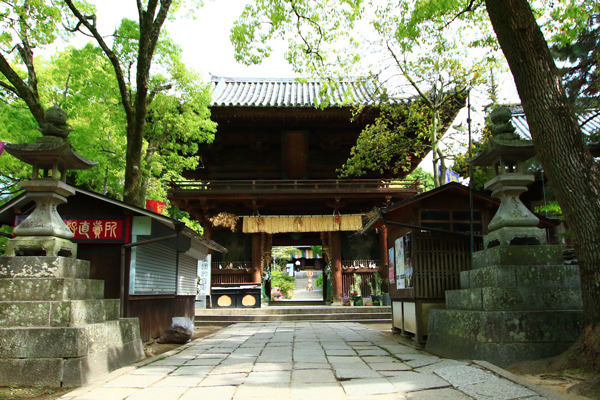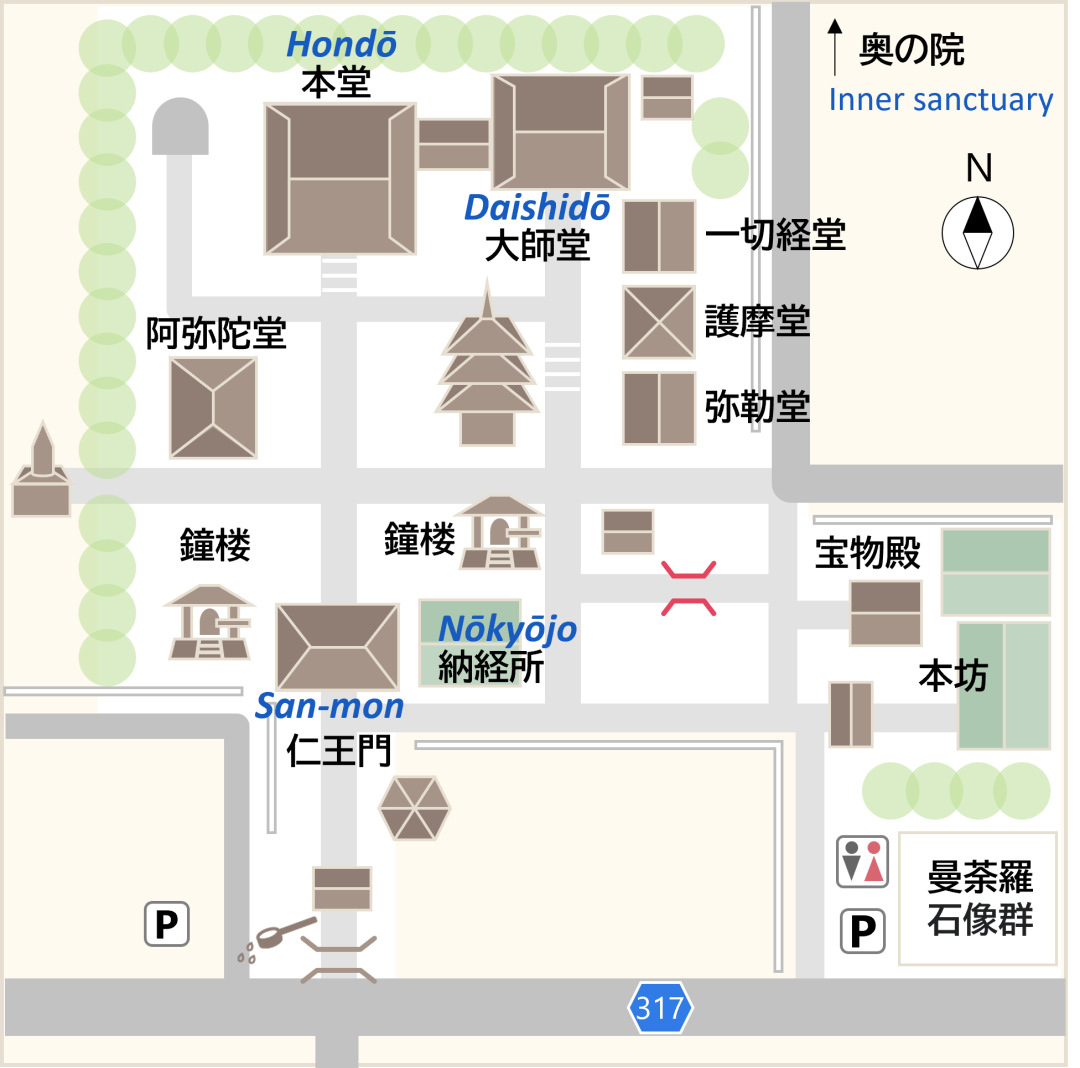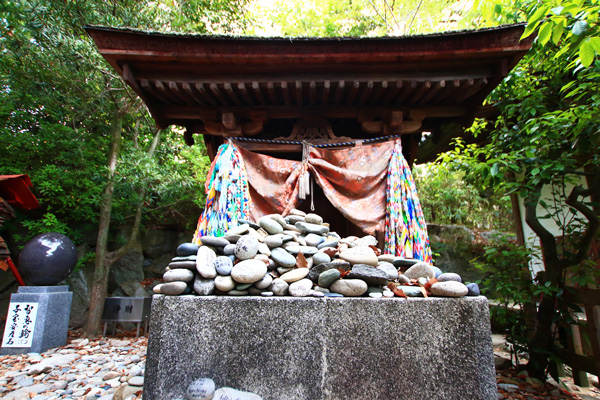The Shikoku Pilgrimage Temple Guide
Temple 51, Ishiteji

Precinct map

History of the temple
Ishiteji is located near Dogo Hot Spring, which is said to be the oldest hot spring in Japan. The approach to the temple is in the form of a corridor lined with stores selling souvenirs, mostly locally-produced products.
Ishiteji is a well-known temple that attracts local Kobo Daishi followers and tourists in addition to pilgrims. This is probably due to the grandeur of the temple; most of the halls and pagodas are National Treasures and National Important Cultural Properties. The temple also has a museum where temple treasures are always on display, and boasts the largest collection of cultural assets of any of the Shikoku pilgrimage temples. The Niomon Gate is a National Treasure. It is 7 meters high, 4 meters wide, with a 3-meter-wide entry space. It was built in 1318. National Important Cultural Properties include the Hondo, the Kariteimotendo, the Gomado, the three-storied pagoda, the bell tower, a five-ring pagoda, and the oldest bronze bell in Ehime Prefecture. An inscription on the bell says “Third year of Kencho” (1251).
According to legend, in 728 Ochi Tamasumi, a wealthy man of Iyo (Ehime), had a vistion of 25 bodhisattvas coming down from the sky to this spot. He was convinced that this was a sacred place. He enshrined the 12 Kumano Gongen (gongen are native Japanese gods accepted into Buddhism) and constructed a building for the protection of the nation by order of Emperor Shomu (reigned 724-749). The following year, Gyoki founded the temple with a statue of Yakushi Nyorai (the Medicine Buddha), which he carved himself as the principal image. He named the temple Anyōji. The temple was a member of the Hosso sect of Buddhism. The name of the temple was changed to Ishiteji in 892, based on the legend about the rebirth of Emon Saburo.
The layout of the temple is in the style of the Kamakura period (1185-1333). It is a three-dimensional mandala, common to temples designed at that time. Tiles excavated from the precincts of the temple suggest that Ishiteji was originally constructed around 680 in a style similar to Horyuji, a UNESCO World Heritage site in Nara.
Highlights
Kariteimotendo Hall
This stone is called a "child-bearing stone" and is believed to bring blessings for childbirth and safe delivery if taken home.
Minna Issho Daibutsu (Great Buddha with Everyone)
It shows a three-dimensional "mandala" representing the teachings of the Buddha.
Amidado Hall
To the left of the Niomon gate. Many people pray here for the prevention of senility

Details
Names: Kumanozan, Kokuzōin, Ishiteji
Denomination: Shingon sect, Buzan school
Principal image: Yakushi Nyorai
Founder: Gyoki
Founded: 729
Access
Address: 2-9-21, Ishite, Matsuyama City, Ehime 790-0852
Phone: 089-977-0870
Parking: Available
Lodging: None
Official website:https://nehan.net/
Instagram:ishitejitemple
